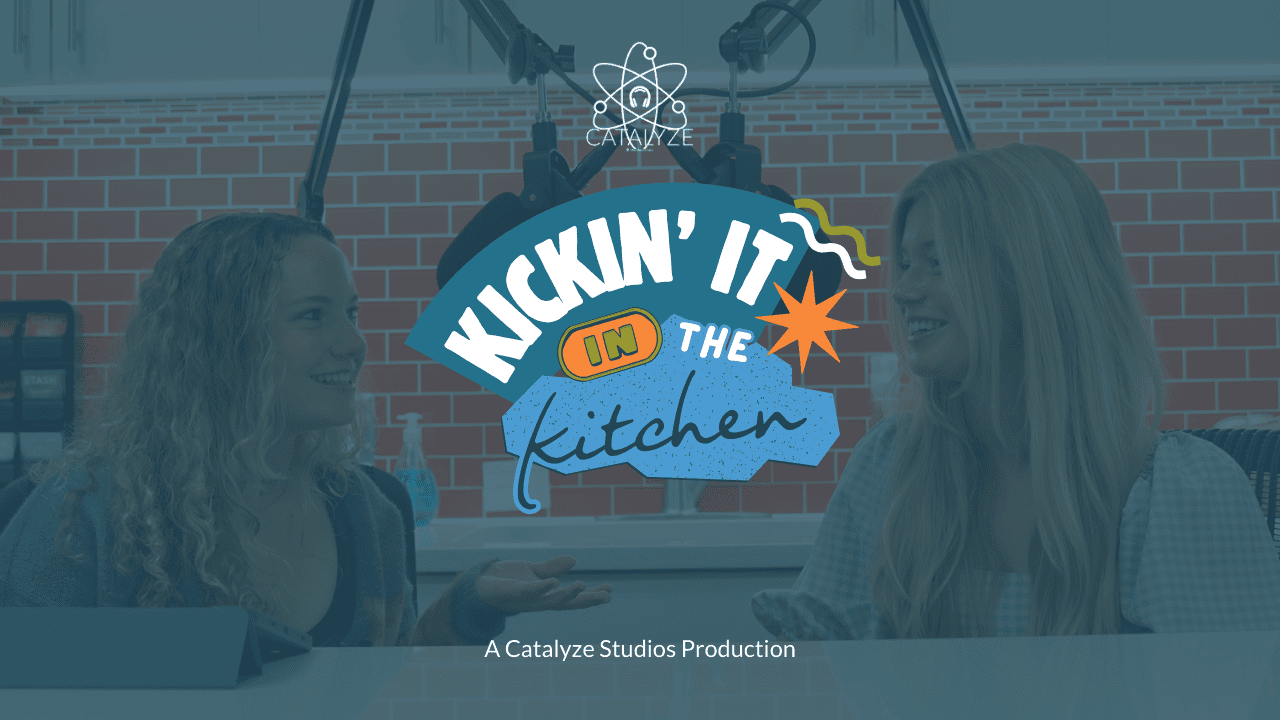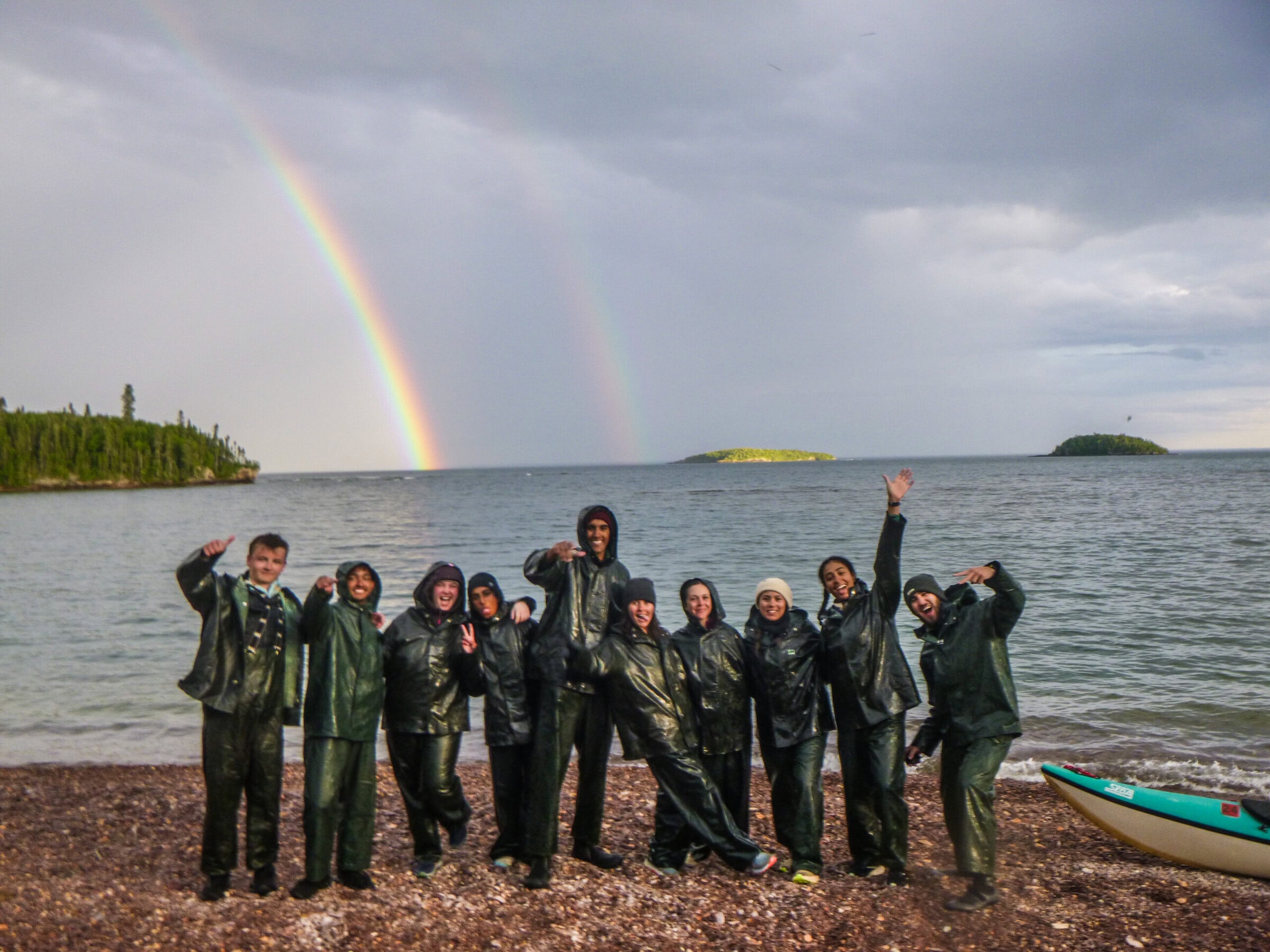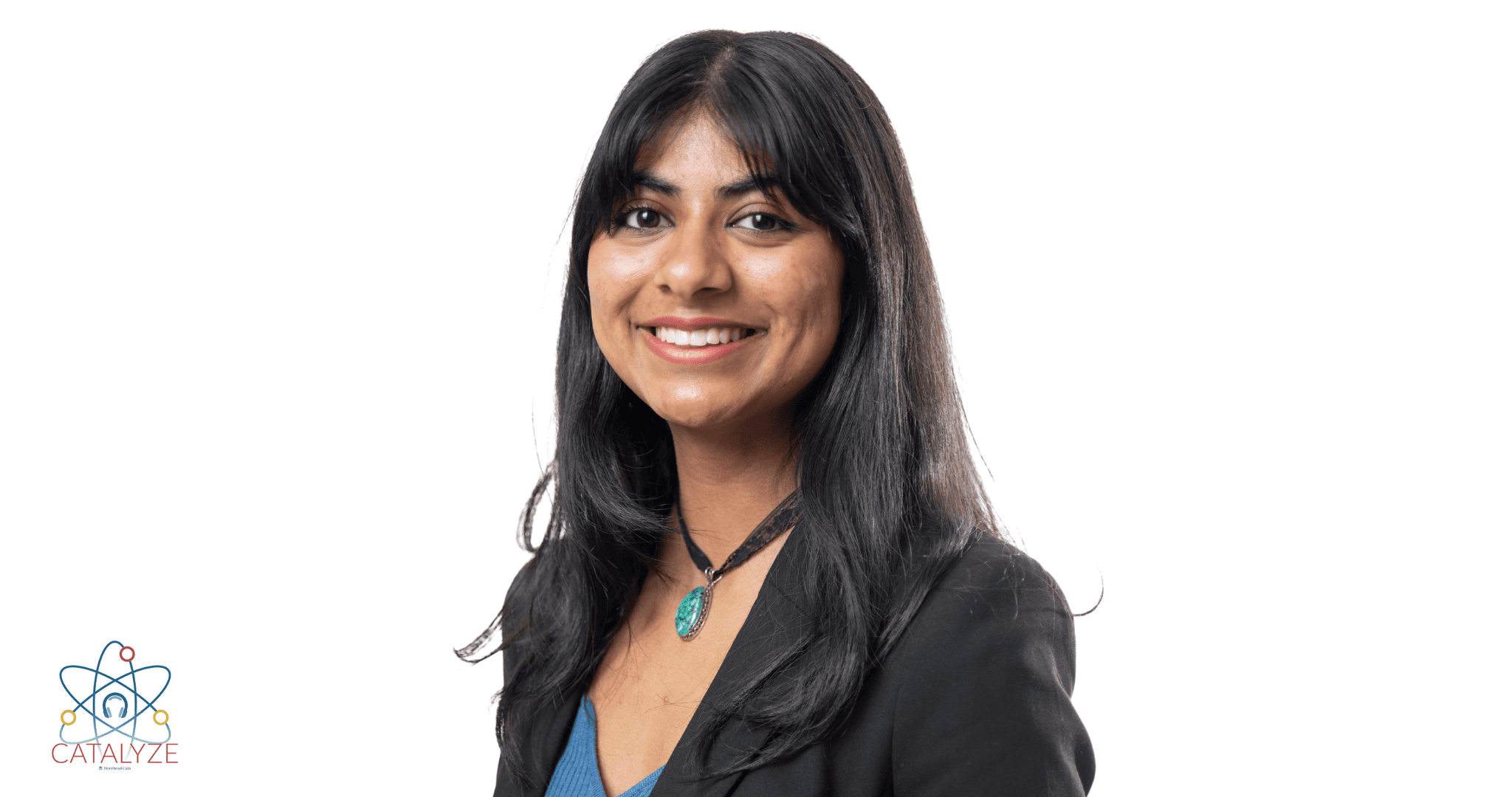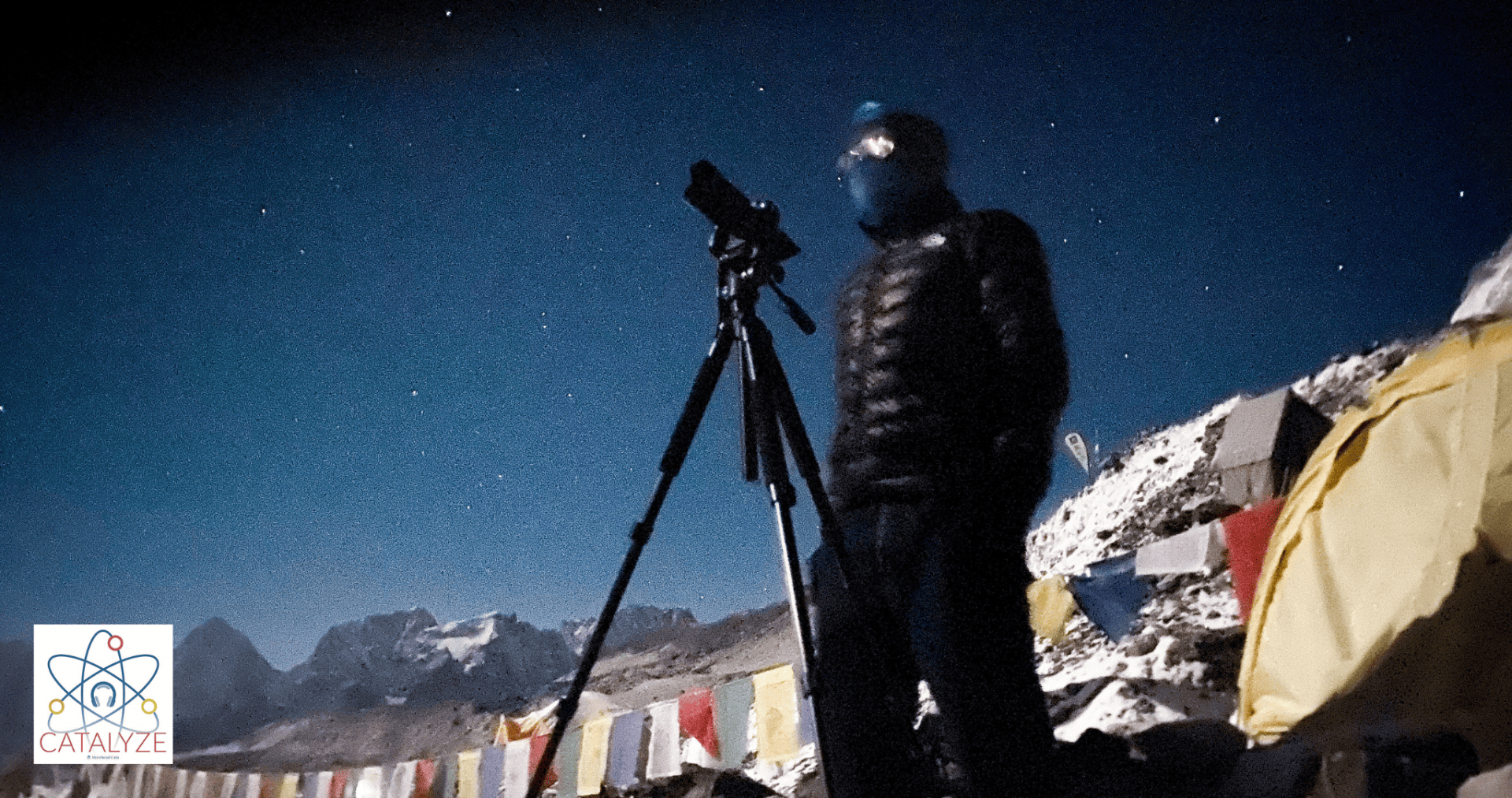
Self-portrait by Aayas Joshi ’26 in the Himalayas
A night under the stars in the Himalayas. A lion hunt from a safari van in Africa. A dune climb in Morocco. Aayas Joshi ’26, Olu Kopano ’26, and scholar host Elias Guedira ’26 share about their global experiences on the Morehead-Cain International Gap Year.
At the end of the episode, we also hear from current gap year scholars Abbey Beebe ’27 about swimming in bioluminescent waters in the Caribbean Sea and Chandler Beals ’27 from an airport in Las Vegas between trips.
Morehead-Cain recipients are invited to consider taking a funded gap year between graduating high school and coming to the University of North Carolina at Chapel Hill.
Listen to the first gap year episode from last year: Gap year dispatch with Emile Charles ’24 (and ft. Taylor Shinal ’25, Mark Finamore ’25, Asher Wexler ’25, and Noah Gottlieb ’25). Emile interned at a children’s hospital in Cape Town, South Africa; visited his father’s Caribbean home in St. George’s, Grenada; worked on a global public health collaboration between the Carolina and the Malawi Ministry of Health; and organized Black Lives Matter protests in Chapel Hill.
Music credits
The intro music is by Scott Hallyburton ’22, guitarist of the band South of the Soul.
How to listen
On your mobile device, you can listen and subscribe to Catalyze on Apple Podcasts or Spotify. For any other podcast app, you can find the show using our RSS feed.
Catalyze is hosted and produced by Sarah O’Carroll for the Morehead-Cain Foundation, home of the first merit scholarship program in the United States and located at the University of North Carolina at Chapel Hill. You can let us know what you thought of the episode by finding us on Twitter or Instagram at @moreheadcain or you can email us at communications@moreheadcain.org.
Episode Transcription
(Aayas)
It’s 1:24 a.m., and I am standing outside my tent on the world’s highest glacier. On Everest, you only get one weather window a year to attempt to climb, and I was just told it opened up an hour ago.
In front of me on the icefall, I see tiny specks of light moving up. Originating from all corners of the planet, after years of preparation, these specs emanate from the headlamps of the most determined people in the world.
Earlier this evening, I met climbers fundraising for disability awareness, for victims of war, advocates bridging racial gaps in mountaineering, climate scientists, documentary teams, and those pushing the known limits of the human body.
Base camp is a congregation of the most inspiring people and the most fascinating stories. It’s no wonder I’ve been standing here absolutely mesmerized. I’m in disbelief of where I am, atop a shifting glacier, standing taller than entire continents, next to a lake of clouds shrouding the valley below us, and surrounded by towering peaks glistening next to a rising moon.
Just me, my camera, and the captivating stillness of a night in the Himalayas.

Photo by Aayas Joshi ’26
(Olu)
Two vans to my left. They pull off. Seven lions in front of me. Click, click, click. One hundred photos, 30 minutes, one place. The first lion goes down, the second goes down, the third goes down, and the fourth follows. Edwin says, “A hunt is about to occur.” We take off, the wind brushing our face. The binoculars out. We’re following. Turn left. 1.5 kilometers later, we reach the spot. Boom. The lioness strikes a baby buffalo under the brush. The three lionesses follow. They arrive at the scene. Everyone in the van shocked. The male lion approaches the scene, takes the baby buffalo. The lioness is pushed against our van. We’re all frozen. Click, click, click.
(Elias)
Welcome to Catalyze. I’m your host, Elias Guedira, from the class of 2026. Joining us today are Aayas Joshi and Olu Kopano from the class of 2026. The two scholars went on an international gap year through Morehead-Cain. Aayas and Olu share their discoveries and reflections from their time abroad, as well as advice for incoming scholars.
Aayas and Olu, thank you so much for joining the podcast today.
(Aayas)
Thank you.
(Olu)
Thank you for having us on here.
(Elias)
For our listeners, Aayas and Olu are both wrapping up their first semester at UNC after taking a gap year through Morehead-Cain’s International Gap Year program. Olu graduated from St. Paul’s School in Baltimore, Maryland, while Aayas graduated from United World College in Changshu, China. Fun fact about Aayas, he is actually the first Morehead-Cain scholar from Nepal. Olu and Aayas, I hope you’ve had a smooth time adapting to life back here in the classroom, but also sufficient time to reflect on your gap year experiences. How does it feel to be back in a traditional learning environment?
(Olu)
It feels good. I had a magnificent year, probably the year where I was able to have the most and do the most learning that I’ve done in my life. But near the end of it, I was ready to be back in the school setting. And that school setting looks different now than what it would have pre-gap year. Pre-gap year, I was thinking business, minor in Japanese, and neither of those are in the equation now. Global studies, most likely, and pursuing Spanish, and it’s exactly what I want. I’m taking classes I’m passionate about and have found a direction that I like.
(Elias)
Nice.
(Aayas)
For me, coming back to conventional education, traditional education, has been interesting. I feel like my gap year prepared me for leaving home and the subtle chaos that is the first semester of college, but also because my gap year helped me decide what path I wanted to take for college, similar to what Olu was saying. And so what I’m studying now feels a little more intentional because I can connect it with what I learned on my gap year.
(Elias)
It’s so incredible being able to gain that experience, especially before going into college, really getting to explore the world outside of it before delving into it. So, thank you again for being on the podcast. So, flashback to March 2021. You’re looking at your computer or phone, or mobile device, and you learn that you’ve just received the Morehead-Cain scholarship. What prompts you to say, “Hey, I’m going to press a pause button on my college education and take a gap year for now?”
(Olu)
It was the idea that I have loved travel. I was able to travel to Tokyo in high school, had such a memorable experience, and I was missing that feeling. I had opportunities to travel later in high school, but COVID-19 hit, and that ended all possibility of that. So thinking of going into another year of schooling and missing out on the travel that I potentially could have had, just like I’d missed out in the past, was just an opportunity that I felt like I couldn’t miss again, especially when Morehead was funding a significant part of it.
(Aayas)
For me, I went to an international school, and so what happened was after they initially sent us back home for COVID, they weren’t able to bring us back. And so, I had gone through one and a half years of online school and was feeling pretty burned out by that point. And I’ve also always believed that the way that the system works right now tends to rush kids into choosing their life’s path of like 17, 18 years old when they haven’t really had a chance to explore what they really want to do. And so, I really liked the idea of taking a pause and exploring my interests in trying to find out what I want to pursue for college.
And I think what ended up prompting me to actually take the gap year was, ironically, the Catalyze podcast. I remember, I was listening to the gap year episode before this one, and it was Taylor’s voice—Taylor Shinal, class of ’25—and she was talking about her experience in the Serengeti, watching The Great Migration. And I remember listening to that at home and, like, pacing around my room saying, “I need to do this. This is exciting.”
(Olu)
Now that you mentioned that, it was honestly, I can vividly remember the time when I heard the Catalyze podcast on the gap year. And I went, I was sitting on the couch with my dad, and we were listening to it, and we both gave each other the same look and said, “You’re going to do this, you’re going to take this gap year.” And here I am.
(Elias)
Yeah, this is a full two years later. It’s such an incredible feeling. I mean, I was also in that same position, having taken a gap year myself, and I remember listening to this podcast and thinking, “Wow, what they did was super cool.” And the fact that we all get to be on the other side of it is such a treat. So a lot of people ended up taking gap years during COVID. Did you have any concerns that this was the wrong path initially? And what would you have to say to anybody that’s taking a gap year right now and might feel a little bit lost?
(Olu)
I don’t know if I had any concerns that it was the wrong path, but it is not just one path. It is an experience that is up to you to decide. And that’s scary. That is something that people don’t like. That’s something at one point that I was scared of. I had done all this research, and it led to nothing. And I thought, “What is this gap year going to be? What am I going to do? I have no clue what it’s going to look like.”
I was getting frustrated with myself. It was a difficult period, but it was ultimately one of the most rewarding periods of my life because I was, for the first time, had the power to decide what I was going to do with my life for a complete year.
So for people in this position now and struggling with what they might potentially do for the second half of the gap year, or if they’re thinking about it in the future, I would say lean into that discomfort because the other side will be better.
(Elias)
So if you were to condense your gap year travels into a storybook with chapters, what would you entitle each of those chapters, and what would the setting have been for each of them?
(Olu)
That’s a really good question. So I think this kind of goes off my last answer, and the first part was about diving in. So I would label the first chapter, which was Costa Rica, “Diving.” And that was diving into a language that I was unfamiliar with, diving into a culture and area that I was unfamiliar with, and diving into a project, which was construction, and building homes for single mothers, which obviously I had not done construction before. So everything was new. Everything was diving full force into it. And that was probably the first chapter.
And the second chapter would be “Solo.” Solo was in Saint Lucia. It was just me there. I was working an internship, and I didn’t know anybody. I had one family member, but other than that, that was it. And my nights were spent by myself. Most of my days were spent by myself. And that period was so important to the growth that I was able to develop later.
And the third chapter would be “Homecoming.” Homecoming because I was in Africa in that period. I traveled to Tanzania, Egypt, and Morocco. And even though I’d never been to Africa, my family, me, all of us included, we’ve always felt connected to Africa in some sense or another. And being able to actually step foot on the motherland was really important to me. And really, it felt like I was at home.
And I guess the last chapter would just be maybe “Jump Around.” I was in Europe, and I went to seven different countries. I stayed in Spain for six weeks, and then the other six were five days here, five days there. And each chapter was very pivotal in the gap year.
(Aayas)
My chapters would be slightly different. I think the first chapter I would call, “Hey, why don’t we go to Everest?” Fun little hike. So I had lived in Nepal for 18, 19 years, and I had never seen Mount Everest. So I told a group of friends, “Why don’t we go hiking and go see it?” And so that was the first chapter.
The second chapter I would call, “Oops, I accidentally hitchhiked the entire South Asian coast” because that was not the intention when I left home. I left on a fairly spontaneous international flight to New Delhi, and I happened to travel for almost two months, over 8,000 miles, 26 cities, around the entire South Asian coastline. So that was really fun.
Chapter three would probably be “Returned to Everest for a cause.” So that’s when I started to work on climate change projects in the region.
And the fourth project would be, I’d probably call it “The heritage project.” So for context, in 2015, Nepal faced a mega earthquake that flattened half of my city. And so a big debate that was sparked after that was, how do we preserve and document heritage so that we don’t lose it again? And I worked with a professor at UNC actually, a religious studies professor at UNC, on documenting tangible and intangible heritage 3D models, things like that. So that was a really cool project that I worked on, but those would be my four chapters.
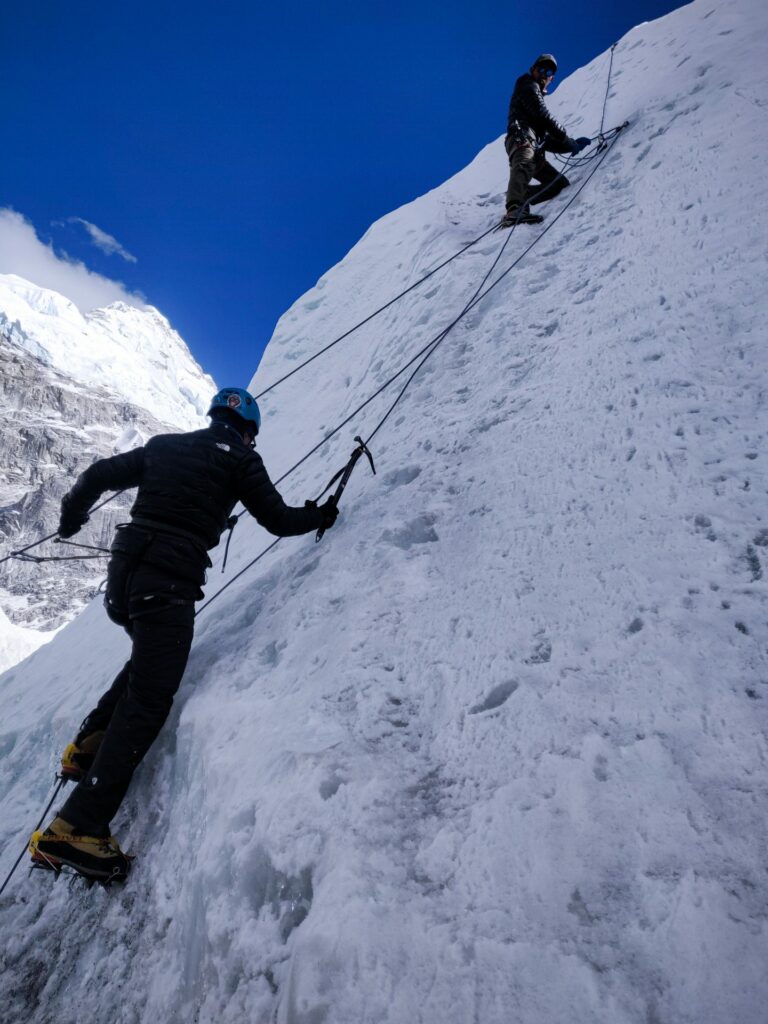
Photo by Aayas Joshi ’26
(Elias)
So when you say documenting tangible and intangible artifacts, what exactly do you mean by that?
(Aayas)
It was really cool, actually. We had a team of people, and we would fly LiDAR drones around heritage sites to then 3D model them later. And the goal was to be able to create a virtual space where you can access this heritage and also have annotated stories and pictures and ways to explore the area without actually being there, so that if another earthquake does come and destroys the heritage, there’s still a replica or a version of it that we can still visit later.
(Elias)
Aayas, for viewers that are unfamiliar with your line of work, you spend a lot of time documenting monuments, documenting stories through photography, storytelling, and blogging. In fact, you’re working on a project with the goal of helping integrate Himalayan communities into scientific research and documenting the effects of global warming on these communities to spread awareness. Can you talk a little bit more about how you got involved with this project during your gap year?
(Aayas)
The first time I went to Everest Base Camp, I was amazed by how beautiful it is and all of that. But I was also very shocked by how many concerning things I saw that I had not heard about or I don’t think people generally knew about.
I remember this specific moment when I was walking on a glacier, the world’s highest glacier; it’s called the Khumbu Glacier. It was at 5,500 meters in elevation, that’s approximately 18 [thousand] feet, I believe. And we were walking on a solid glacier, and my foot went into the glacier, so it went into a meltwater pond. And my guide then was shocked and surprised, and he kept saying, “That’s not supposed to happen. This is not supposed to be melting. These puddles weren’t here last week.” And that got me really concerned. That experience is something I couldn’t forget even after I went back.
And so I started doing some research, and I started seeing these really concerning headlines, things along the lines of, the region is warming three times faster than the global average, or Everest alone has lost more than 2,000 years’ worth of ice and snow in the last 30 years, and how climate change in the region is expected to impact 1.5 billion people in South Asia. That’s one in every four humans. And so, after hearing all of that and realizing that not a lot of people knew about it, I thought that I wanted to do something. But at the time, I didn’t really know what I could do other than spread the word. So I tabled it for some time, and then I went on my India trip, and this thought of “I should do something” kept bothering me. I couldn’t let it go.
Coincidentally, after my India trip, I had other international plans that, because of visa issues, passport issues, or generally COVID restrictions, I had to cancel. And so I took that as a sign that I should go back to Everest. And I told myself, I’m going back. This time I’m going to take my filming gear with me, and I’m going to try to document what I saw and share it with others because maybe if people saw what I saw, maybe if people heard the stories that I heard, they would want to know more about the issue. They would care about it. And so that was the goal.
And before I went, I went on the Morehead-Cain Network, and I found Noam Argov. She’s the class of 2015. She’s a documentary filmmaker. So I sent her an email saying, “Hey, I really want to work on this. Do you know it? Do you have any advice, any wisdom for me?” (Hey, Noam, if you’re listening to this, very grateful to you.) But she linked me with this nonprofit called Himalayan Climate and Science Institute, and with them, I was able to work on projects integrating local communities with scientific research.
So the project that they were working on aimed to train local community members there to work on weather stations so that we don’t have to, like, fly out technicians and scientists from the other side of the world, which would speed up the data collection process quite a lot.
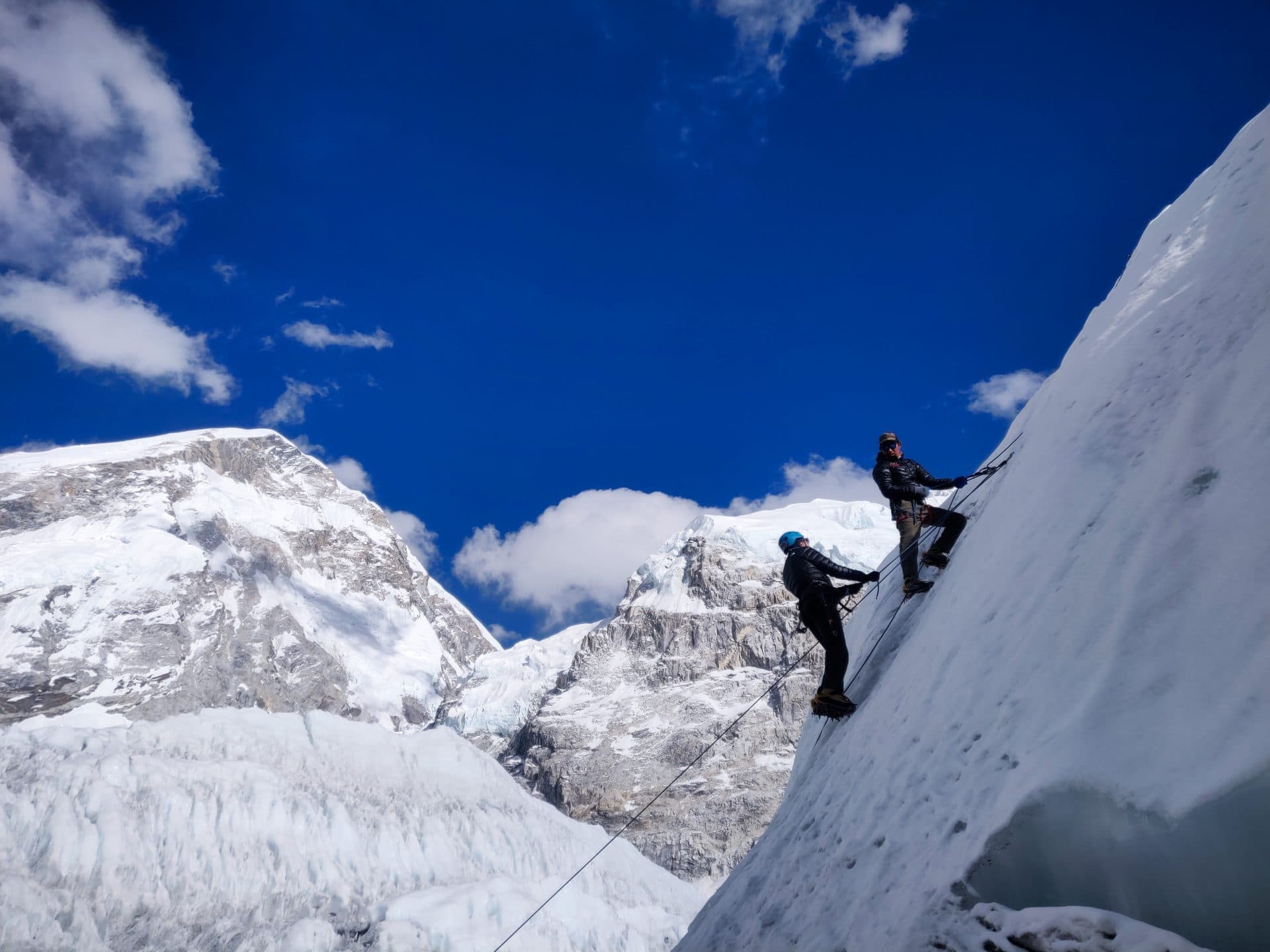
Photo by Aayas Joshi ’26
(Elias)
It’s so wonderful that you were able to capture the effects, the disproportional effects that climate change really has on people, especially in communities where people may feel unheard or not linked to media or scientific research. So I’d like to applaud you for all the great work that you’re doing there.
Olu, you entitled the portion of your gap year that you spent in Saint Lucia “Solo.” From my understanding, you spent a significant amount of time alone when you were working in Saint Lucia. You frequently mention that you had realizations while you were staying in the country, while you were spending nights and days by yourself. Can you share with listeners what you found to be the value of being alone and any discoveries you had about yourself or the environment?
(Olu)
First, being alone, I think the biggest discovery was surrounding learning, and I think I hinted at it earlier where I said the gap year was the year that I felt like I’d done the most learning ever in my life. And I really think that started in Saint Lucia. I honestly wasn’t the most excited as I was when I was going to Tanzania and Spain when it came to Saint Lucia, because I was alone, and I had not been alone for a significant period of time. Even when I was in Costa Rica, I joined a program, I was with a ton of people my age. But now I had an internship with middle-aged individuals, and then I was back in, just me, and that was scary.
So I wasn’t really the most excited for it. But again, I leaned into it, and it paid off. I had time to think about, just self-reflect. I had time to engage in different podcasts. I had time to start my Spanish learning and picking up Quizlet. I had time to read. And just by being alone, I learned more about myself. I found interests that I didn’t know I had.
And one more thing. Going off of the second part that you had about learning about the environment around me, I think this actually wasn’t done alone, but having that kind of experience where I was more tuned in to the place that I was working and place I was living. I definitely think I had some of those experiences.
So one, really quickly, would be working in concierge at a five-star resort. I was surrounded by other employees from Saint Lucia, and Saint Lucia, for those who don’t know, was colonized by the French and by the British, and it was a seven-time colonized by the French and eight-time by the U.K. And just looking at the effects that it had on how people were treated was very, very present. So a lot of folks from the U.K. would go to Saint Lucia for holiday, and I could see instantly the dynamic where the treatment was still from some sort of colonial approach, where, whether it was a demeaning tone or a place of “I’m better than you,” and it was really interesting to just be on the outside of that.
And yes, I looked like the Saint Lucians, but when I was approached, and when I was talking with guests, I could instantly see the difference because I didn’t have that St. Lucian background, and maybe having that time reflecting, being in that place where I was learning and creating and exploring my identity as well, I was able to see that in a different lens.
(Elias)
It’s so interesting being able to dive into that environment, especially from an American perspective. You kind of get to see the effects that colonialism and systemic injustices have on other countries and how your experience differs vastly from other people’s just because of your nationality.
Now, Olu, you mentioned doing a lot of things that you seem to appreciate more while you were alone. For me, I love to channel my thoughts through journaling and blogging. I also spent a considerable amount of time on Duolingo improving my languages. How did you go about expressing yourself, whether that was through journaling or storytelling among friends and family?
(Olu)
Journaling was definitely number one. I looked back at it the other day, actually, at my gap year journal, and I had over 60,000 words, I had around 100 pages of journaling, and whether it was only a few sentences a day or two pages a day, and that was more for me. That was more of the self-reflection. That was more of seeing the growth that I had from the beginning of the gap year to the end.
But I also had other forms, whether it was my Instagram and keeping people engaged with photos and stories, or whether it was just through photography. For example, in Tanzania, when we were there, actually, during the Serengeti trip, I was able to take over 1.200—1,300 photos and videos, and I still have them as my screensavers today. And just, that being a reminder of what is out there in the world and seeing incredible sites, Ngorongoro Crater, lions hunts, and elephants. And knowing that that can happen, and I lived that, and I look forward to doing something like that. And again, and obviously, that’s all thanks to Morehead, the Morehead-Cain funding that I was able to receive from them.
(Elias)
Wonderful. And you, Aayas?
(Aayas)
For me, I must say, Elias, it was actually you that inspired me to start documenting more. I remember in the beginning of the year when you and Spence took that road trip across North America, and you had a blog, and you were posting pictures. I remember looking at it and going, “That is so cool. I want to start doing more of that, too, like documenting more of my journeys.”
And so I’ve always loved photography. And so when I went trekking, when I went on my different gap year trips, I started taking pictures and posting little story blogs and story sessions on Instagram, and that’s where most of my documenting happened. Personally, I also journaled quite a bit. I had an online journal that has thousands and thousands of words. It’s always nice to look back at some of them and see a year ago I was here doing this.
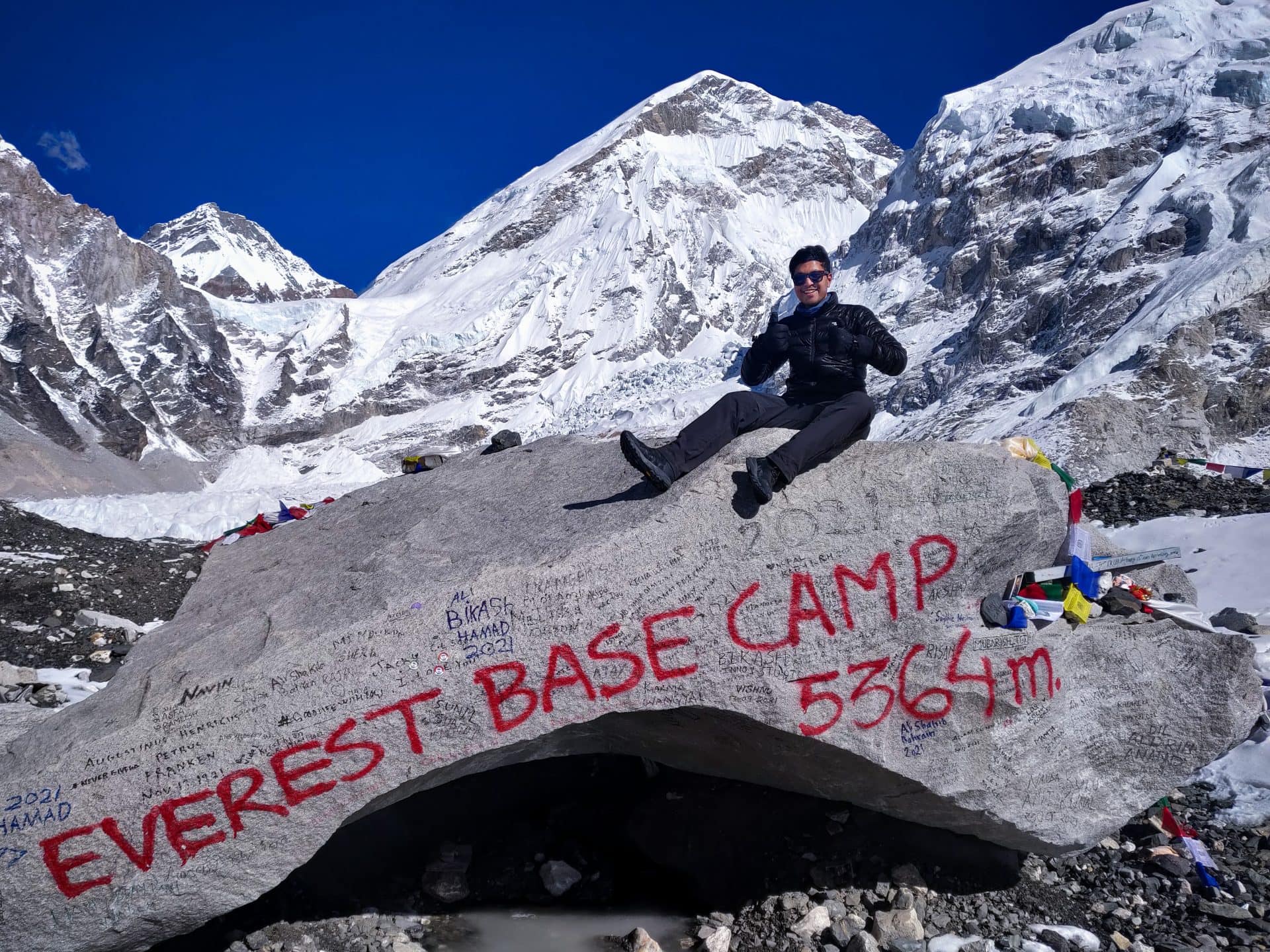
Photo by Aayas Joshi ’26
(Elias)
I feel so honored that I inspired you to take a blogging and photography, and I also have to respect you for what you have done with it and how you have gone about documenting your gap year. I have always admired that.
(Aayas)
Thank you, Elias.
(Elias)
Okay, this is a tough question. What is your favorite memory from your gap year?
(Olu)
I often tell people, I kind of break it up into experiences, and I might cheat a little bit with this question.
My favorite experience was the, I think it was seven of us in Tanzania and the Serengeti trip that we had, a seven day experience where we’re living out in tents and we’re hearing hyenas right behind us while we’re trying to sleep, and we’re waking up to elephants tearing down trees. That would probably be my favorite experience.
And my favorite trip would be you and me, actually, in Morocco, eight days where were in Rabat, we’re in Marrakesh, and we take a three-day, two-night trip to the Sahara, and we’re riding camels into the sunset and going to sleep in the Sahara and waking up and sand boarding through the dunes. And I would probably say those two experiences were the most memorable and my favorite memories, for sure.
(Aayas)
One of my favorite experiences that was actually recurring throughout my gap year was seeing the Milky Way.
So I love stargazing, personally, and so to be able to see the Milky Way in the sky from different places: one, from Everest Base Camp when I was surrounded by the glistening peaks, the world’s highest mountains towering over me. Seeing the Milky Way on the night that I bivvied in the Thar Desert—it’s in northwest India. The day that we found an oasis and slept next to it.
Seeing the Milky Way from the backwaters of Kerala in a tropical rainforest, and then seeing the Milky Way next to bioluminescent waves on the southernmost tip of South India. That would probably be my favorite experience for my gap year, seeing the same thing across these different places.
(Elias)
I know there’s so many things to choose from, and personally, I cannot pick one single favorite memory from the gap year. I think they’re all special in their own ways. My final question for you, if you could give one piece of advice to your pre-gap year self, what would that piece of advice be?
(Olu)
Don’t make a plan. That might not be the advice that I should be giving right now, but I think the most important experiences that I had in my gap year weren’t planned. They were made by mistake. They happened because my plan fell through, and I had to come up with something different.
I think having that flexibility to find an interest and be in a country, and then that spark an idea of what to do next, where to go next, that would be what I say to do. Don’t have a plan. Don’t create a whole year of what you think you’re going to do because you won’t do it. Lean into the unknown and stick with it.
(Aayas)
I really agree with that, Olu. My advice to myself would be very similar. The best place for you is where you naturally gravitate to and not necessarily the path you carve out for yourself.
I know you guys know this, Olu and Elias, but for the listeners, prior to going on my gap year trips, I thought Morehead-Cain was really strict with what they wanted me to do and how I could use their stipend. So I produced an 83-page PDF of my gap year plan. I planned every single day. It had maps, it had color-coded calendars, and I ended up doing almost none of that.
I’m very glad that it worked out that way, because I would not trade the experiences I had on my gap year for anything.
(Elias)
Aayas and Olu, thank you so much for joining Catalyze today.
(Olu)
Thank you for having us. It was a pleasure.
(Elias)
Thank you for joining Catalyze. I’m Elias Guedira from the class of 2026, and that was Olu Kapano and Aayas Joshi from the class of 2026. You can let us know what you thought of the episode by emailing us at communications@moreheadcain.org or by following us on Twitter or Instagram at @moreheadcain.
(Abbey Beebe ’27)
Hello, everyone. This is Abbey Beebe.
I am a current gap year scholar, and right now, I’m on an island off the coast of Honduras called Utila, and it’s about 9:52 p.m., and I just jumped into the Caribbean Sea.
And I want you to picture every time you move a limb, so you kick or you move your arm, the ocean lights up like a galaxy full of stars. And this is because of the bioluminescence.
And it’s truly a magical experience. And it’s unlike anything I’ve ever seen before. And I’m just lucky to be here.
(Elias)
It’s mid-October. The sun shines, golden. Transparent, deep blue sky colliding with gleaming sands in the horizon. I look at the point of earth stretching highest to the sun, Erg Chebbi, the tallest dune in Morocco, and among those in the Sahara Desert. An unforeseen impulse rises in me, screaming in me, telling me to climb.
I call out to my friend from Arabic class. She wears an orange and black caftan and a scarf, protecting her vision from the sun’s piercing rays. She looks on from a nearby ridge, observing like a tiger. I let her know it could take a while before I come down.
I dig my foot into the mountain before me and begin. Grains of sand sift beneath my toes while an hourglass sifts above my head. The sun above me encroaches the earth. As I wear a blue jillaba, I fight its fabric clawing at my feet, holding my movement as I climb. Suddenly, the sand loses grip of the mountain it’s clinging to. The sound of friction as the particles slide. I lose my footing. Now, futilely, I’m stretching my feet and arms into the only surface I can see in front of me.
I breathe. Regain control. The sun pulls closer. As I ascend, I hear voices in another language. Blurs of movement behind heat waves. Two tourists enjoying their first days in Morocco. We trade names and stories. We appreciate two vastly different views.
I look back to my friend. Behind her neck, tents and base camp. And then, the Hamada. A barren expanse of rock desert. Shale floating on eerily still sand like melting ice on the surface of a lake. Shards of rock cracking and drifting apart. Black mountains fold upward in the distance, indicating the last frontier before Algeria.
I turn around towards the sun setting in front of me, an ocean of sand. Waves arcing in every direction, formations that must have been caused by some sort of tempest. Below, at the horizon, riders on camelbacks piercing their way through the rolling dunes like ships in a storm. I stay here for a moment, admiring the stillness from above. Breeze blows from the west. The sun meets earth and back into the quiet storm. I descend.
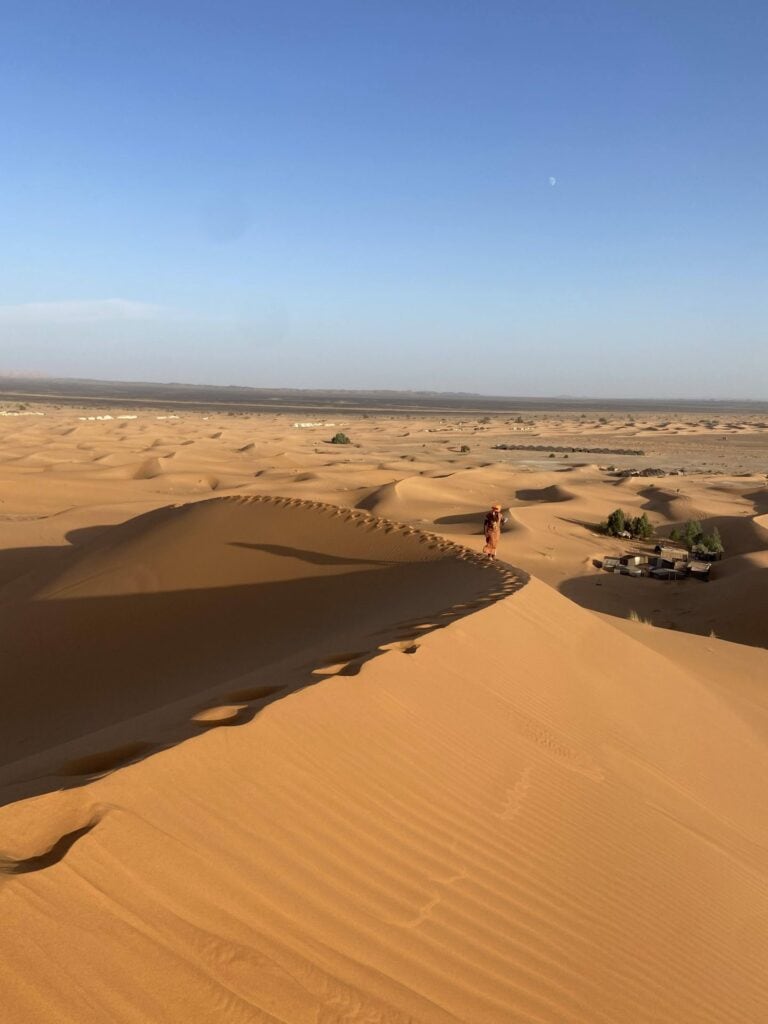
Photo by Elias Guedira ’26
(Chandler Beals ’27)
Hello, everyone.
My name is Chandler Beals, and I am a current gap year scholar. And right now, I’m sitting at the Las Vegas airport. I have a layover here on my way home from Baja California Sur, Mexico, where I did the Baja Sea Kayaking course through the National Outdoor Leadership School, NOLS.
Yes, I just had a really mediocre panini, and I’m sitting here with my iced coffee, just kind of people watching and reflecting on my trip. I feel very content, very thankful, and also a little sad. It’s hard to live with people for an entire month and really get to know them well, and then, just as quickly as you came, have to leave them behind.
With traveling a lot, I feel like my heart’s in a lot of different places, but at the same time, it’s a really good feeling. And, yeah, I leave for Sweden in a week, and I’m really happy to be here.
